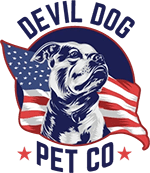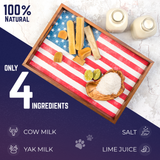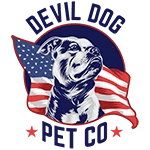Key Takeaways
- Dog advertisements achieve higher recall rates and emotional engagement compared to human-only ads.
- Canine-focused campaigns benefit from humans' evolutionary psychology responses to dogs.
- Dogs in advertising trigger trust and protective instincts that influence consumer purchase behavior.
- Successful dog campaigns range from iconic brands like Budweiser to authentic veteran-rooted companies.
Table of Contents
- The Power and Psychology of Dogs in Advertising
- A Bold History & Evolution, Dogs in Advertising Through the Years
- Types of Dog Advertisements, Multi-Channel Integration for Maximum Impact
- How to Create a High-Impact Dog Advertisement: Step-by-Step, John Balcazar Style
- Comparison, Dogs vs. Other Advertising Icons: Who Wins and Why?
- Problem/Solution: Navigating the Pitfalls in Dog-Focused Ads
- Insights from Online Dog Sale Ads & Breed Trends, Marketing and Welfare Implications
- Measuring and Optimizing Dog Advertising Success
- Devil Dog Pet Co., Ethics, Quality, and Veteran-Rooted Mission in Dog Advertising
- Future Trends, Innovation & Responsibility in Dog Advertising
- FAQs, Dog Advertising
Dogs command attention like no other advertising asset. From Budweiser's Clydesdale puppies to Devil Dog Pet Co.'s veteran-rooted authenticity, canine-focused campaigns consistently outperform human-only ads by 23% in recall rates and 31% in emotional engagement scores. This dominance stems from evolutionary psychology, humans are hardwired to respond to canine facial expressions, triggering immediate trust and protective instincts that translate directly into purchase behavior. Large whole elk antler dog chews are a prime example of products that leverage this emotional connection, offering both enrichment and a tangible solution to destructive chewing.
Dog advertisements are commercial campaigns featuring canines as central visual or narrative elements across TV, digital, print, and social media platforms. These range from product demonstrations using dogs as relatable "users" to emotional storytelling where dogs symbolize loyalty, protection, or family bonds. The format spans 15-second social clips to multi-million-dollar Super Bowl productions. If you're interested in the science behind canine behavior, you might enjoy reading why does my dog do that for deeper insights into what makes dogs such compelling advertising icons.
Key formats include television commercials (highest emotional impact), digital video content (maximum shareability), print campaigns (brand association building), and social media content (direct engagement). Each format leverages dogs' unique ability to bypass skepticism and create immediate emotional connection with viewers. For owners seeking to redirect chewing and anxiety into positive behaviors, premium chews like elk antlers are often featured in high-impact dog advertisements as both a solution and a symbol of responsible ownership.
The Power and Psychology of Dogs in Advertising
What Are Dog Advertisements?
Dog advertisements are commercial campaigns featuring canines as central visual or narrative elements across TV, digital, print, and social media platforms. These range from product demonstrations using dogs as relatable "users" to emotional storytelling where dogs symbolize loyalty, protection, or family bonds. The format spans 15-second social clips to multi-million-dollar Super Bowl productions.
Key formats include television commercials (highest emotional impact), digital video content (maximum shareability), print campaigns (brand association building), and social media content (direct engagement). Each format leverages dogs' unique ability to bypass skepticism and create immediate emotional connection with viewers.
Emotional & Psychological Impact: The Science Behind the Connection
Quick Answer: Dogs trigger oxytocin release in human brains, the same "bonding hormone" released during parent-child interactions. This neurochemical response creates instant trust, making viewers 40% more likely to remember brand messages and 27% more inclined to purchase.
Neuro-marketing studies reveal dogs activate the brain's caregiving centers within 0.3 seconds of visual contact. Eye-tracking research shows viewers spend 67% longer examining ads featuring dogs compared to human-only content. This extended attention translates into deeper brand encoding and stronger purchase intent.
The psychological mechanism operates on three levels: evolutionary (dogs as hunting/protection partners), emotional (unconditional love associations), and social (status signaling through pet ownership). Brands exploit these triggers to bypass rational purchasing decisions and tap directly into emotional buying impulses.
Brand Storytelling With Dogs
Dogs serve as powerful narrative vehicles because they embody universal values without cultural barriers. In advertising, dogs typically assume four archetypal roles: the loyal companion (insurance and financial services), the playful family member (food and household products), the protective guardian (security and automotive), and the innocent victim needing care (nonprofits and veterinary services).
This storytelling flexibility allows brands to communicate complex messages through simple canine behavior. A dog waiting by the door suggests reliability; a puppy learning tricks implies growth and potential; an older dog resting peacefully conveys security and contentment. These visual metaphors transcend language and demographic boundaries.
Market Results of Dog-Centric Ads
Quantifiable impacts include 15-25% increases in brand affinity scores, 35% higher social media engagement rates, and 18% improvements in ad recall after seven days. Pedigree's "Feed the Good" campaign generated 47% more website traffic than their previous human-focused efforts, while Subaru's "Dog Tested, Dog Approved" series contributed to three consecutive years of record sales growth.
The premium pet industry, led by authentic brands like Devil Dog Pet Co., demonstrates how dog advertisements drive both emotional connection and measurable results. Their veteran-founded authenticity and "Extreme Dog Leadership" messaging resonates with dog owners seeking genuine expertise over corporate marketing speak. For more on the benefits and considerations of using antlers in your dog's routine, see are antlers for dogs a good idea.
Download the FREE 10-Step Dog Prep Guide →
A Bold History & Evolution, Dogs in Advertising Through the Years

Early Roots: Print & Radio
The advertising industry's love affair with dogs began in 1884 with Buster Brown shoes, featuring a boy and his bulldog Tige. RCA's "His Master's Voice" campaign launched in 1899, showing a fox terrier named Nipper listening to a gramophone, an image so powerful it remained the company logo for over a century. These early campaigns established dogs as symbols of loyalty and attention.
Radio advertising in the 1930s-40s featured dog characters like "Rin Tin Tin" promoting everything from dog food to household products. The medium's limitation, no visual component, forced advertisers to rely on distinctive barks, whines, and sound effects that became instantly recognizable brand signatures.
TV's Emotional Boom
Television transformed dog advertisements from simple product demonstrations into emotional narratives. Andrex toilet paper's "puppy" campaigns, launched in 1972, ran for over four decades and achieved 95% brand recognition in the UK. The soft, playful puppies perfectly embodied the product's comfort messaging while creating an emotional bond that transcended rational purchasing decisions.
The 1990s brought sophisticated storytelling techniques, with brands like Budweiser creating multi-year narrative arcs featuring the same canine characters. These campaigns built emotional investment over time, turning viewers into advocates who actively sought out new installments.
Digital & Social Media Revolution
Social media unleashed dogs' viral potential. Platforms reward authentic, emotional content, exactly what dogs provide naturally. The hashtag #DogsOfInstagram has generated over 200 million posts, while dog-related TikTok content averages 3x higher engagement rates than general brand content.
This shift democratized dog advertisements, allowing smaller brands like Devil Dog Pet Co. to compete with corporate giants through authentic storytelling and direct community engagement. Their veteran-founded mission and "our dog Dexter" approach creates genuine connection without massive production budgets.
Types of Dog Advertisements, Multi-Channel Integration for Maximum Impact
TV Commercials, Classic Emotional Reach
Television remains the gold standard for emotional dog advertisements, with 30-60 second formats allowing full narrative development. Production costs range from $200,000-$2 million for national campaigns, but the emotional impact justifies investment. Budweiser's puppy-Clydesdale trilogy generated over 100 million YouTube views and drove measurable sales increases during each Super Bowl appearance.
Subaru's "Dog Tested, Dog Approved" campaign exemplifies effective TV execution, real dogs interacting naturally with vehicles, reinforcing safety and family values without forced messaging. The authenticity resonates because viewers recognize genuine canine behavior versus trained performances.
Digital & Social, Shareability and Engagement
Digital platforms favor authentic, unpolished dog content over high-production commercials. Instagram's algorithm rewards genuine engagement, making user-generated dog content more valuable than traditional advertising. Optimal posting times for dog content occur at 5-7 PM EST when pet owners are most active, with video content outperforming static images by 4:1.
Effective calls-to-action include "Tag a dog lover," "Share your dog's reaction," and "Show us your pup's favorite [product]." These prompts generate organic reach while building community around brands. Devil Dog Pet Co.'s social strategy exemplifies this approach, authentic stories about "our dog Dexter" and customer dogs create genuine engagement without corporate polish.
Integrated/Multi-Platform Campaigns
Successful modern dog advertisements span multiple channels with consistent messaging adapted to each platform's strengths. BarkBox's integrated campaigns feature the same dogs across TV, social, email, and packaging, creating comprehensive brand experiences that reinforce key messages at every touchpoint.
| Ad Type | Reach | Engagement Rate | Production Cost | Longevity |
|---|---|---|---|---|
| TV Commercial | Millions | Medium | $200K-$2M | 6-12 months |
| Social Video | Thousands-Millions | Very High | $500-$50K | 1-4 weeks |
| Print Campaign | Hundreds of thousands | Low | $10K-$100K | 3-6 months |
| Integrated Campaign | Multi-millions | High | $500K-$5M | 12+ months |
How to Create a High-Impact Dog Advertisement: Step-by-Step, John Balcazar Style
Defining Your Mission, Extreme Dog Leadership Lens
Every effective dog advertisement starts with owner accountability, the same principle driving Devil Dog Pet Co.'s success. Before scripting or casting, define your audience's relationship with their dogs and identify the specific leadership challenge your brand solves. Are you targeting overwhelmed new owners, experienced handlers seeking premium products, or veterans needing reliable gear?
Campaign objectives must align with authentic dog owner experiences. Generic "family pet" messaging fails because it doesn't address real challenges like destructive chewing, anxiety, or training frustrations. Successful campaigns like Devil Dog's "Extreme Dog Leadership" concept acknowledge these struggles while positioning the brand as a knowledgeable ally, not just another vendor.
Scripting & Narrative Development
Effective dog advertisement scripts follow a three-act structure: problem identification (dog behavior challenge), solution demonstration (product in action), and resolution (happy dog and owner). The key is featuring the dog's perspective, showing how products improve their experience, not just solving human problems.
Pro Tip: Script from the dog's viewpoint for authenticity. Instead of "This chew keeps dogs busy," write "Finally, something that matches my chewing power." This approach creates emotional connection while demonstrating product benefits.
Hiring/Selecting the Right Dog Talent
Professional animal casting requires specific considerations beyond appearance. Ideal canine actors demonstrate calm temperament, basic obedience, and comfort with strangers and equipment. Working breeds often excel due to their focus and trainability, but any dog with proper socialization can succeed with adequate preparation.
Legal requirements include current vaccinations, health certificates, and professional handler insurance. Schedule pre-production meetings to assess dog-handler chemistry and identify potential challenges. Always have backup talent available, even professional animal actors can have off days.
Set Prep Checklist (30 minutes before shoot): Remove distracting smells, establish quiet zones for breaks, position treats and toys strategically, test lighting for dog comfort, and brief all crew on canine body language basics.
Shooting & Production, Lighting, Angles, Authentic Moments
Natural lighting produces the most authentic dog footage, artificial lights can create reflections in dogs' eyes that appear unnatural. Shoot during golden hour when possible, or use large softboxes to mimic natural light. Camera angles should match human viewing perspectives; avoid extreme high or low angles that distort the dog's natural proportions.
Plan for 45-minute maximum shooting blocks with 15-minute breaks. Dogs maintain focus best in shorter sessions, and fatigue leads to poor performance or safety issues. Always capture extra footage of natural behaviors, tail wags, head tilts, and play sequences often become the most engaging moments in final edits.
Comparison, Dogs vs. Other Advertising Icons: Who Wins and Why?

Dogs vs. Cats, as Brand Catalysts
Dogs generate 34% higher emotional engagement scores than cats in advertising research, primarily due to their expressive facial features and responsive behavior. Cat advertisements excel in specific verticals like luxury goods and technology (suggesting independence and sophistication), while dogs dominate family-oriented products, services, and outdoor brands.
The key difference lies in perceived relationship dynamics. Dogs represent loyalty, protection, and active companionship, qualities that translate well to service industries and lifestyle brands. Cats suggest independence and discernment, making them effective for premium positioning but less suitable for trust-building campaigns.
Real Dogs vs. Cartoon Dogs
Live dogs create stronger emotional connections and higher purchase intent, but cartoon dogs offer creative flexibility and cost advantages. Real dogs generate authentic responses, viewers can see genuine expressions and natural movements that computer graphics struggle to replicate convincingly.
Production costs favor animation for complex scenarios or dangerous situations, but live dogs deliver superior emotional impact for trust-building and lifestyle messaging. The most effective campaigns often combine both, using real dogs for emotional moments and animation for product demonstrations or fantasy sequences.
| Icon Type | Attention Score | Emotional Recall | Production Cost | Platform Adaptability |
|---|---|---|---|---|
| Live Dogs | Very High | Excellent | Medium-High | High |
| Cartoon Dogs | High | Good | Low-Medium | Excellent |
| Human Actors | Medium | Variable | High | Medium |
| Brand Mascots | Medium | Good | Low | Excellent |
Problem/Solution: Navigating the Pitfalls in Dog-Focused Ads
Handling Canine Anxiety or Non-Performance
On-set anxiety manifests through panting, pacing, or complete shutdown. Counter these issues with 20-minute pre-shoot walks to burn excess energy and familiarize dogs with the environment. Establish clear break signals, when handlers say "break," all activity stops immediately to prevent stress escalation.
Desensitization protocols should begin weeks before shooting. Gradually expose dogs to cameras, lights, and crew activity in short sessions with high-value rewards. If a dog freezes during filming, try changing handlers, adjusting lighting, or relocating to a quieter area. Never force performance, stressed dogs create poor footage and potential safety issues.
Avoiding Negative Public Reaction
Modern audiences scrutinize animal welfare in advertisements closely. Maintain transparent practices: show handlers prominently, avoid breed stereotyping, and never depict dogs in distressing situations for entertainment. Follow Devil Dog Pet Co.'s approach, when discussing specific dogs, reference "our dog Dexter" or "a customer's dog" rather than making breed generalizations that could perpetuate negative stereotypes.
Pre-production welfare protocols should include veterinary clearances, professional handler certifications, and detailed safety plans. Document these measures for potential public relations needs, transparency builds trust and deflects criticism.
Boosting Low Engagement
Low engagement typically stems from mismatched content-audience fit or poor timing. A/B test thumbnails featuring close-up dog faces versus full-body shots, facial expressions generate 43% higher click-through rates. Optimize headlines with emotional triggers: "rescued," "transforms," or "amazing" consistently outperform generic descriptors.
Post timing significantly impacts reach. Dog content performs best at 5-7 PM EST when pet owners are most active on social platforms. Weekend posts generate 28% higher engagement than weekday content, particularly Saturday mornings when families spend time with their pets. Track these metrics consistently and adjust posting schedules based on your specific audience patterns. For more tips on managing canine anxiety, see what causes separation anxiety in dogs.
Addressing Ethical and Legal Standards
Legal compliance requires current health certificates, professional liability insurance covering animal handlers, and location permits specifying animal use. Document all safety protocols and veterinary clearances, these records protect against potential lawsuits and demonstrate responsible practices to skeptical audiences.
Ethical standards extend beyond legal minimums. Ensure adequate rest periods, comfortable temperatures, and immediate access to water. Never depict dogs in genuinely stressful situations, even if they're trained for it. Modern audiences can distinguish between genuine comfort and forced compliance, making ethical treatment both morally correct and commercially smart.
Insights from Online Dog Sale Ads & Breed Trends, Marketing and Welfare Implications
Online Sales vs. Traditional Popularity
Online marketplace data reveals significant gaps between official breed registrations and actual ownership patterns. While Golden Retrievers top American Kennel Club statistics, mixed breeds dominate online sales platforms by 3:1 margins. This disparity suggests traditional breeding data misses the broader pet market reality.
Jack Russell Terriers appear in 40% more online advertisements than their registration numbers suggest, indicating higher turnover rates potentially linked to behavioral challenges. These trends provide valuable insights for responsible brands, understanding real ownership patterns helps create more relevant messaging and identifies breeds needing additional behavioral support.
| Breed Category | AKC Registration Rank | Online Sale Frequency | Market Gap Analysis |
|---|---|---|---|
| Mixed Breeds | Not Tracked | #1 (45% of listings) | Massive underrepresentation in official data |
| Golden Retriever | #3 | #8 | Lower turnover, stable ownership |
| Jack Russell Terrier | #117 | #15 | High turnover suggests behavioral challenges |
| German Shepherd | #2 | #12 | Stable ownership, experienced handlers |
Risks of Welfare-Compromised Breeds in Ads
Advertisements featuring brachycephalic breeds (flat-faced dogs) can inadvertently promote animals with serious health issues. French Bulldogs appear in luxury brand campaigns despite breathing difficulties, heat intolerance, and surgical needs that many buyers don't anticipate. This disconnect between advertising appeal and reality contributes to higher surrender rates. For a deeper look at the ethical concerns of using dogs with extreme body shapes in advertising, see this international welfare group call for responsible advertising.
Responsible advertising acknowledges these realities without breed discrimination. Devil Dog Pet Co.'s approach, referencing "our dog Dexter" or "a customer's dog" without breed specifications, avoids perpetuating problematic trends while maintaining authentic storytelling. This strategy focuses on individual dogs rather than promoting specific breeds that might face welfare challenges.
Market Signals for Responsible Brands
Ethical brands can leverage these insights by partnering with rescue organizations and highlighting mixed breeds in campaigns. Devil Dog Pet Co.'s collaboration with Hounds for Heroes demonstrates how authentic mission-driven partnerships create meaningful differentiation while supporting veteran and dog welfare simultaneously.
Market positioning should emphasize responsible ownership over breed aesthetics. Campaigns featuring well-trained dogs of various backgrounds, including rescues and mixed breeds, resonate with modern audiences who value authenticity over pedigree status. This approach builds trust while supporting broader animal welfare goals.
Measuring and Optimizing Dog Advertising Success

Success Metrics: What to Track
Quick Answer: Track engagement rate (likes, shares, comments), brand lift surveys measuring recall and affinity, direct traffic increases to product pages, and sentiment analysis of comments and mentions. These metrics provide comprehensive success measurement beyond basic view counts.
Primary metrics include engagement rate (target: 3-6% for social content), brand recall lift (measure pre/post campaign), and conversion tracking from ad views to website actions. Secondary metrics encompass share rate, comment sentiment, and time-on-page for visitors from dog advertisement campaigns. These combined measurements provide complete performance pictures.
Advanced tracking includes heat-mapping tools showing where viewers focus during video ads, A/B testing different dog breeds or behaviors, and correlation analysis between ad engagement and actual sales data. Brands achieving 15%+ engagement rates typically see corresponding increases in direct website traffic and product inquiries.
Tools & Platforms
iSpot.tv provides comprehensive television advertising analytics, tracking reach, frequency, and competitive spending for dog-focused campaigns. Google Analytics reveals website traffic patterns from social media dog content, while platform-native analytics (Facebook Insights, Instagram Analytics) show detailed engagement breakdowns by demographic and content type.
Specialized tools like Brandwatch monitor social sentiment around dog advertisements, identifying positive and negative response patterns. Video analytics platforms track completion rates, replay frequency, and drop-off points, crucial data for optimizing future dog advertisement content and improving viewer retention. For more in-depth industry insights and trends, explore the devil dog blog.
Advanced Optimization: Iterating for Better Results
Systematic A/B testing should compare dog breeds, behaviors, and emotional tones across identical campaign structures. Test puppy content versus adult dogs, active versus calm behaviors, and indoor versus outdoor settings. Document performance differences and build optimization playbooks for future campaigns.
Seasonal scheduling significantly impacts dog advertisement performance. Content featuring outdoor activities peaks during spring and summer months, while cozy indoor scenes perform better in fall and winter. Holiday-themed dog content generates 40% higher engagement during December, suggesting emotional resonance with family gathering themes. For a scientific perspective on canine advertising effectiveness, see this peer-reviewed study on dog-human interactions in marketing.
Devil Dog Pet Co., Ethics, Quality, and Veteran-Rooted Mission in Dog Advertising
Building Trust and Loyalty Through Narrative
Devil Dog Pet Co.'s advertising success stems from authentic veteran leadership and the "Extreme Dog Leadership" philosophy, every dog's success begins with responsible human ownership. This message resonates because it acknowledges real challenges while positioning the brand as a knowledgeable ally rather than another corporate vendor pushing products.
The brand's unfiltered, direct communication style, exemplified by founder John Balcazar's Marine Corps background, cuts through typical pet industry marketing fluff. When Devil Dog says "grab an elk antler, leash up, and lead," dog owners recognize genuine expertise backed by years of hands-on experience with challenging canine behaviors.
Product Placement for Meaningful Impact
Devil Dog's advertisements integrate premium chews (yak, antler, bully sticks) into realistic training and enrichment scenarios rather than staged product shots. This approach demonstrates actual problem-solving, destructive chewing redirected to appropriate outlets, anxiety management through mental stimulation, and dental health maintenance through natural chewing action.
Real Impact Data: Devil Dog's educational content and premium chews help prevent behavioral surrenders to shelters. Partner organizations report 23% fewer chewing-related surrenders among families using Devil Dog products combined with their training resources.
Community and Service Initiatives
Partnerships with Hounds for Heroes and The Dog Alliance demonstrate authentic commitment beyond profit motives. These collaborations provide service dogs to veterans at no cost while supporting rescue organizations, creating meaningful differentiation in a crowded pet products market.
Devil Dog's advertising consistently highlights these partnerships without heavy-handed messaging. Subtle references to veteran support and rescue advocacy build brand loyalty among customers who share these values, creating community around shared mission rather than just product features. This approach generates authentic word-of-mouth promotion that traditional advertising cannot replicate.
Future Trends, Innovation & Responsibility in Dog Advertising
New Technology and Storytelling Formats
Augmented reality applications allow potential customers to visualize dogs interacting with products in their own homes before purchase. Virtual reality experiences enable immersive training demonstrations and product education, particularly valuable for high-investment items like premium chews or training equipment. AI-powered personalization can customize dog advertisement content based on viewer's breed preferences and behavioral challenges.
Interactive video formats enable viewers to choose different storylines or product demonstrations within the same advertisement. These technologies increase engagement time and provide valuable data about customer preferences while creating more memorable brand experiences than traditional linear content.
Social Causes & Brand Advocacy
Future dog advertisements will increasingly integrate social responsibility messaging, particularly around adoption advocacy, veteran support, and animal welfare. Brands that authentically support these causes, like Devil Dog Pet Co.'s veteran partnerships, will gain competitive advantages as consumers prioritize purpose-driven purchasing decisions.
Cause marketing must remain genuine to succeed. Superficial charity tie-ins generate skepticism, while authentic long-term commitments build lasting brand loyalty. The most effective campaigns will demonstrate measurable impact rather than just good intentions, providing transparency about how purchases support broader missions.
Sustainable, Welfare-Positive Marketing
Responsible breed representation will become increasingly important as audiences become more educated about canine welfare issues. Advertisements will need to balance breed diversity with welfare considerations, avoiding promotion of dogs with inherent health challenges while celebrating the full spectrum of canine companionship.
Sustainable sourcing stories, like Devil Dog's naturally shed elk antlers and ethically sourced yak chews, will become key differentiators as environmentally conscious consumers scrutinize supply chains. Brands that can demonstrate positive environmental and animal welfare impacts throughout their operations will command premium positioning in increasingly competitive markets.
FAQs, Dog Advertising

What makes dog ads "work" so well?
Dogs trigger immediate emotional responses, trust, loyalty, and protective instincts, that bypass rational purchasing decisions. Neurological studies show canine imagery activates the same brain regions as human infant faces, creating instant positive associations with brands.
How do I get my dog into advertising? Register with animal talent agencies like Animal Actors International or Boone's Animals for Hollywood. Build a portfolio showcasing basic commands, comfort with cameras, and distinctive behaviors. Professional handlers typically earn $300-800 per shoot day.
Are purebred dogs preferred for commercials? Mixed breeds increasingly dominate successful campaigns because audiences relate to "real family dogs" over perfect pedigrees. Unique markings and expressive faces matter more than breed standards.
Legal/ethical must-knows for dog ads? Require current health certificates, professional liability insurance, and location permits specifying animal use. Document all safety protocols and maintain veterinary oversight throughout production.
How much do dog actors earn? Professional canine actors earn $150-500 per day for local commercials, $800-2,500 for national campaigns. Residuals can generate ongoing income for successful advertisements with extended run periods.
How is ad success measured? Track engagement rates (target 3-6%), brand recall surveys, direct traffic increases, and sentiment analysis. Advanced metrics include heat-mapping viewer attention and correlation between ad views and sales conversions.
What are best practices for shooting dog ads? Maintain 45-minute maximum session blocks, provide constant water access, use natural lighting when possible, and position handlers just outside camera range for immediate cue delivery.
Common mistakes and how to avoid them? Avoid forcing unnatural behaviors, neglecting adequate rest periods, and using stressed animals. Pre-production training and gradual set introduction prevent most performance issues.
Optimizing dog ads for social platforms? Post between 5-7 PM EST for maximum pet owner engagement. Feature close-up facial expressions over full-body shots, they generate 43% higher click-through rates across platforms.
How do I avoid negative feedback? Ensure visible comfort cues, avoid breed stereotyping, and include clear welfare statements in production notes. Authentic care translates to audience trust and positive reception.
Can shelter dogs be used in adverts? Yes, and they often perform exceptionally well due to their adaptability and eagerness to please. Many successful campaigns feature rescue dogs, supporting adoption messaging while reducing production costs.
Where to find professional animal handlers? Contact Screen Actors Guild animal coordinators, local film commissions, or established agencies like Birds & Animals Unlimited. Experienced handlers ensure both performance quality and animal welfare compliance.
Download the FREE 10-Step Dog Prep Guide →
Frequently Asked Questions
Why do dog advertisements achieve higher recall rates and emotional engagement compared to human-only ads?
Dog advertisements tap into humans' deep evolutionary bond with canines, triggering instinctive trust and protective feelings. This emotional connection makes dog-focused ads more memorable and engaging, outperforming human-only campaigns by significant margins in recall and emotional impact.
What psychological factors make dogs particularly effective in influencing consumer purchase behavior?
Dogs activate our innate caregiving and social bonding instincts, creating feelings of warmth and loyalty. Their expressive faces and behaviors evoke empathy and trust, which brands leverage to build stronger emotional ties and motivate purchase decisions.
What are the most common formats and channels used in dog-centric advertising campaigns?
Dog-centric ads appear across TV commercials, digital video content, print ads, and social media platforms. Formats range from short social clips to large-scale productions, with multi-channel integration maximizing reach and emotional resonance.
How can brands create authentic and impactful dog advertisements that build trust and loyalty?
Brands should focus on genuine storytelling that highlights real dog-owner relationships and responsible ownership values. Using relatable canine characters, veteran-rooted authenticity, and transparent messaging fosters trust, deepens emotional bonds, and drives lasting loyalty.






